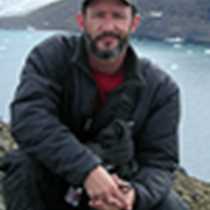This morning we awoke in a part of Antarctica not visited by most people who venture to the Antarctic Peninsula, the Weddell Sea. This large expanse of tabular bergs and sea ice is inaccessible for most of the year. The past few years it has not been accessible even in the height of summer, but this year the winds moved a lot of ice out of the northwest part of the sea. The weather was gray and winds present, but it looked promising so our expedition leader and captain made a bold plan to spend two days in the sea. It paid off, as we ventured to the east side of the Antarctic Peninsula we found the holy grail of penguins, the emperor. There is a small colony of emperors on Snow Hill Island. They breed in the winter but some of the adults are still in proximity to the colony. We were able to spot a few on the sea ice as they rested after their long winter season. The emperor is the largest penguin and one of the hardest birds to see in nature because they only breed in Antarctica. Later in the morning we also spotted a leopard seal. These true ice seals are impressive and cryptic. Little is known about them but that is changing as photographic identification work is increasing through the help of citizen scientists who take pictures and submit them to marine mammologist for study.
In the afternoon we went on Zodiac cruises at Cockburn Island to get glimpses of blue eyes shags and adelie penguins that nest there. The sheer volcanic cliffs were a great backdrop for the birds and ice. We also found that the shore fast connected Cockburn to James Ross Island several miles away. The weather cleared and the wind dropped to zero and another emperor penguin was seen on the sea ice so we approached it with the ship. It was happy to preen itself as we looked on enjoying the beautiful sunshine.







